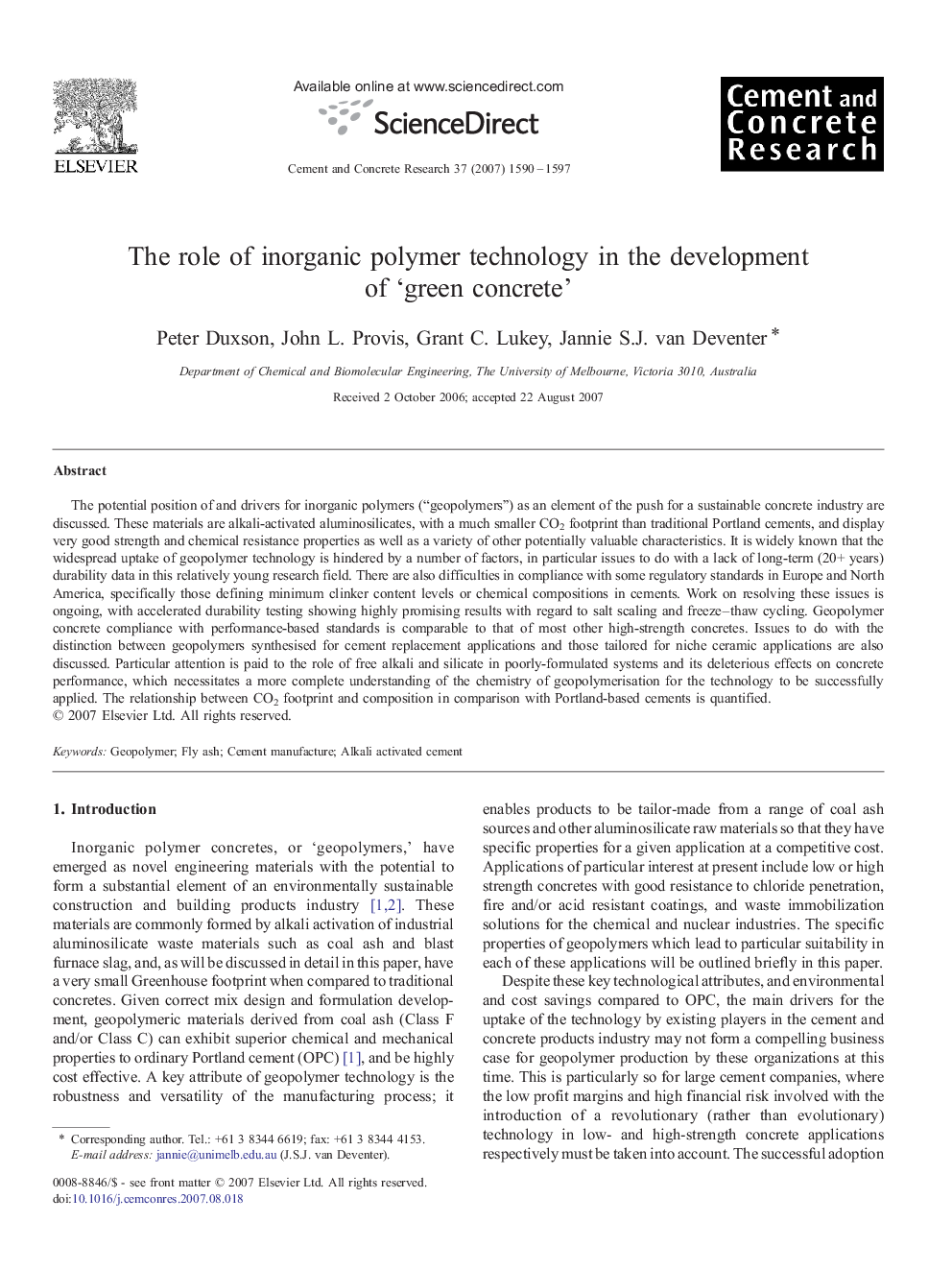| Article ID | Journal | Published Year | Pages | File Type |
|---|---|---|---|---|
| 1457471 | Cement and Concrete Research | 2007 | 8 Pages |
The potential position of and drivers for inorganic polymers (“geopolymers”) as an element of the push for a sustainable concrete industry are discussed. These materials are alkali-activated aluminosilicates, with a much smaller CO2 footprint than traditional Portland cements, and display very good strength and chemical resistance properties as well as a variety of other potentially valuable characteristics. It is widely known that the widespread uptake of geopolymer technology is hindered by a number of factors, in particular issues to do with a lack of long-term (20+ years) durability data in this relatively young research field. There are also difficulties in compliance with some regulatory standards in Europe and North America, specifically those defining minimum clinker content levels or chemical compositions in cements. Work on resolving these issues is ongoing, with accelerated durability testing showing highly promising results with regard to salt scaling and freeze–thaw cycling. Geopolymer concrete compliance with performance-based standards is comparable to that of most other high-strength concretes. Issues to do with the distinction between geopolymers synthesised for cement replacement applications and those tailored for niche ceramic applications are also discussed. Particular attention is paid to the role of free alkali and silicate in poorly-formulated systems and its deleterious effects on concrete performance, which necessitates a more complete understanding of the chemistry of geopolymerisation for the technology to be successfully applied. The relationship between CO2 footprint and composition in comparison with Portland-based cements is quantified.
